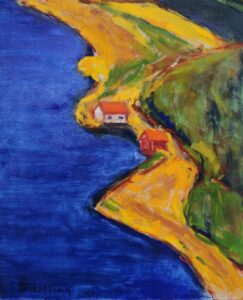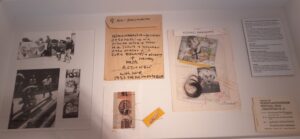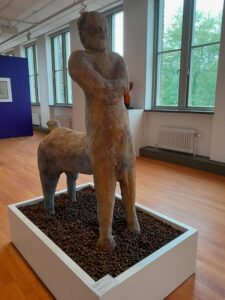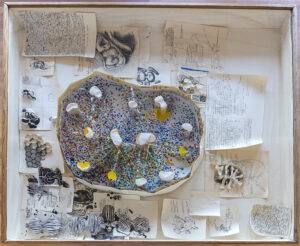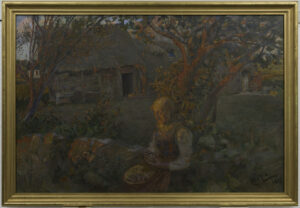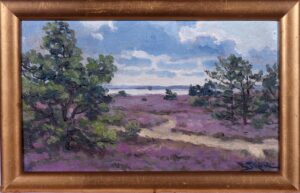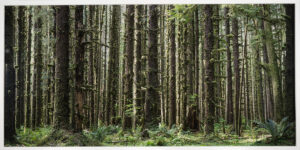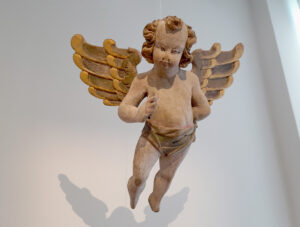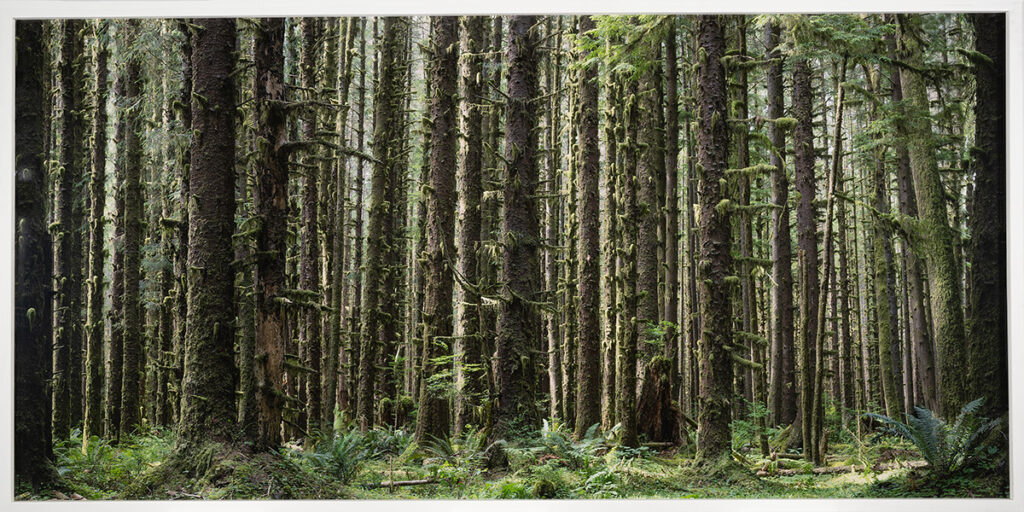Collecting – Ann Eringstam, Karl Nordström and Bertil Herlow Svensson
In this section of From the Collection, we present artworks that in one way or another relate to spirituality. But what is spirituality, really? It’s a vast concept with many possible interpretations.
Many people feel a sense of spirituality in nature, which can evoke a feeling of connection with the universe. Ideas of nature’s spiritual dimensions can be traced back thousands of years. In Norse mythology, humans shared the natural world with various beings—gnomes, elves, and the Æsir gods. However, with the advent of Christianity, forests and landscapes lost much of their spiritual charge for many people. The landscapes of the Bible offered a different kind of nature, with myrtle gardens, deserts, and vineyards. Regardless of religion’s role in society, many still feel a spiritual presence in nature today—even if belief in supernatural beings has become rare.
On one short wall of the room hangs a large, horizontally formatted color photograph. It depicts a spruce forest and is part of the series A Course of Nature by artist Ann Eringstam. Tall spruce trunks dominate the image. In such a dense forest, light struggles to reach the ground, making it dark and damp. Mosses, lichens, and ferns thrive there. The scene is majestic, dreamlike, and evocative—perhaps even a bit enchanted. In an environment like this, one is enveloped by nature, and the experience may resemble that of being inside a cathedral.
Next to the photograph, on the long wall of the room, hangs a moody landscape painting. Such grand vistas can remind us of our place in the universe. In Karl Nordström’s oil painting Dusk, Halland Coast, we see a sunset over a coastal landscape. A warm orange sun sinks toward the horizon. In the foreground, dark rocky outcrops are visible. The sky is splendidly tinted with shades of pink and purple. The painting carries a national romantic glow, with rich, saturated colors. To quietly observe a celestial body like the sun as it slowly moves across the sky is a calming act for many—and it can also serve as a reminder of the infinite cosmos and one’s own place in existence.
In the center of the room floats the brass sculpture Circles in Union by Bertil Herlow Svensson. The work measures almost one meter across and consists of two relatively thin brass circles intersecting one another. One circle hangs vertically, the other horizontally. They are connected by a linear form. This minimalist sculpture can evoke many associations. Perhaps we think of celestial bodies—or maybe wedding rings?
The circle is a symbol found in many belief systems. For example, in Chinese philosophy, the circle of yin and yang represents the eternal dynamic and balance between opposing yet complementary forces in the universe. In Buddhism and Hinduism, the round mandala form symbolizes wholeness, the universe, and inner peace.
